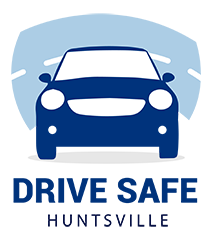Heavy Winds

Please pardon the pun, but good defensive drivers don’t take heavy winds lightly. All vehicles, large or small, have some level of wind resistance, or how much they push back against a blowing wind. During the design process of a vehicle, engineers try to minimize wind resistance so the vehicle can travel with as little force against it as possible. Because vehicles are expected to travel mostly forwards or backwards, their designs are focused on wind resistance from the front or rear.
Be aware that a strong wind can impact how you operate your vehicle from any direction: front, back, or lateral. If you drive in very windy conditions and let down your guard, you can be blown to the side of your travel lane, possibly even into the lane of another vehicle. If that happens, you have a problem. Always maintain a firm grip on the steering wheel when driving in windy conditions. Focus on keeping your vehicle on a straight course, and fight to avoid any drifting from side to side.
Learn to anticipate sudden winds or gusts. If you know conditions are windy, use extra caution as you drive from a sheltered area to an open area, where winds may kick up quickly. This is especially true with crosswinds. Crosswinds are strong, and typically blow across your vehicle, left to right or right to left. Because the sides of your vehicle have the greatest amount of surface area, heavy winds will have the most impact there. This, again, is where you need to be vigilant and maintain a straight path. Fortunately, some areas prone to crosswinds have permanent signs warning of that possibility.

If you drive with a strong wind at your back, be aware that you may have to brake more often to keep your speed within the posted limit. On the other side of the coin, driving into a strong wind may cause you to accelerate more to maintain a reasonable speed limit.

Believe it or not, Mother Nature is not the only source of winds or drafts that can affect your driving. Large trucks with big surface areas can create drafts strong enough to push you aside as they pass by. When on the open road and you notice a large truck is about to pass you, get a firm grip on your steering wheel. Push to hold a steady course. If possible, safely change lanes away from the approaching truck if you have the time and space to do that.
